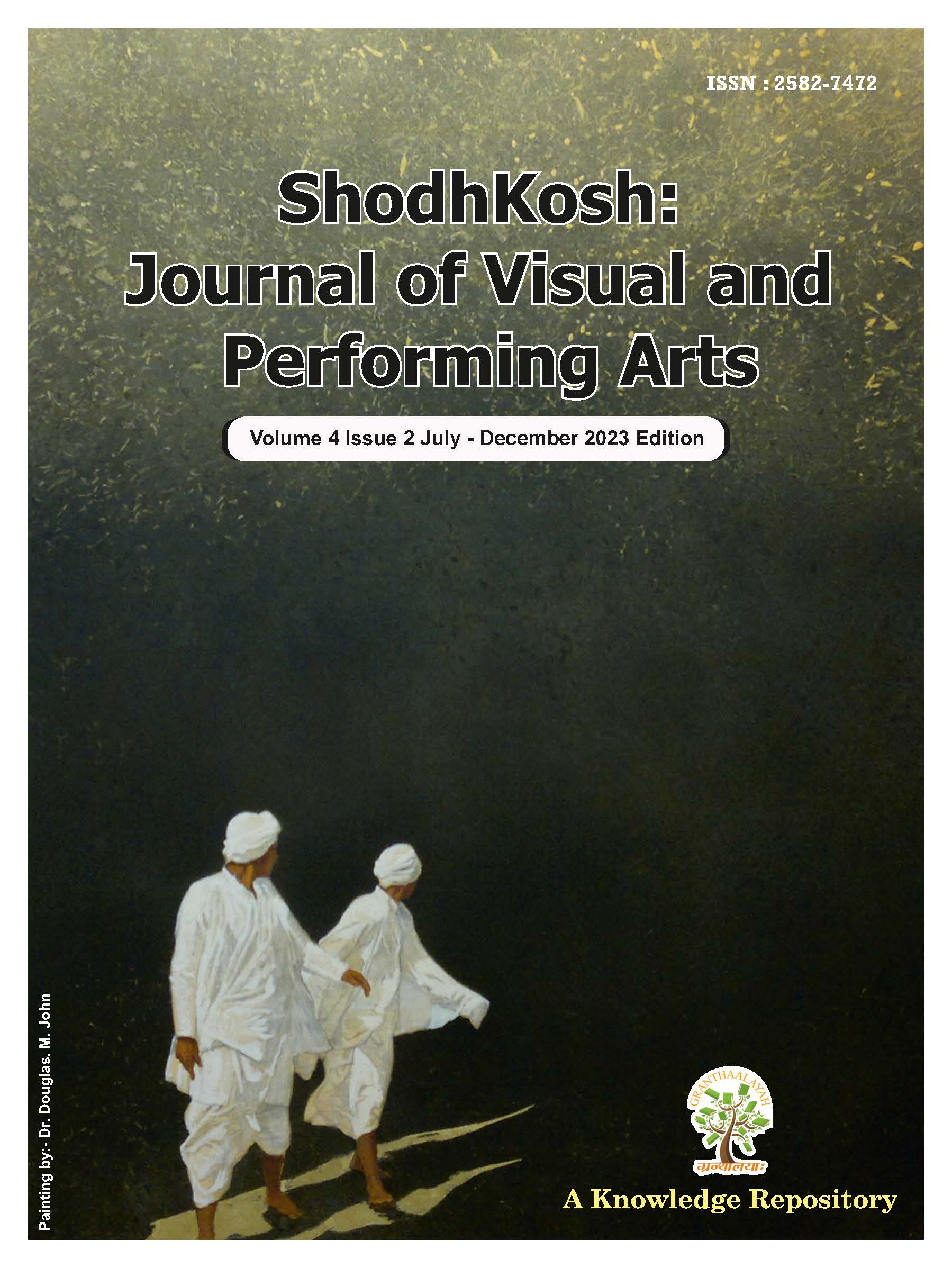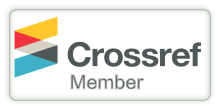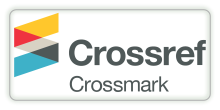A STUDY ON BRAND LOYALTY AMONG MILLENNIALS: STRATEGIES AND INSIGHTS FOR ENGAGING MILLENNIALS
DOI:
https://doi.org/10.29121/shodhkosh.v4.i2.2023.3867Keywords:
Brand Loyalty, Marketing Strategies, Market SegmentAbstract [English]
This study makes a significant contribution to the fields of brand loyalty and Generation Y (often referred to as Millennials) by investigating strategies to influence loyalty behaviours within this demographic group. Generation Y presents a unique challenge for marketers due to their substantial presence in the market and their tendency to exhibit lower levels of brand loyalty compared to previous generations. This group is also known for its resistance to conventional marketing techniques, which can render traditional strategies ineffective.
Despite the growing importance of Generation Y as a key consumer segment, existing literature has yet to fully address the complexities of targeting this demographic. Specifically, there is a lack of comprehensive research on effective tactics for mitigating their perceived disloyalty and adapting marketing strategies to engage them more effectively.
In response to these gaps, the study introduces a proposed conceptual model that offers a framework for modifying and enhancing current marketing tools to better resonate with Generation Y. By doing so, the model aims to provide actionable insights into how businesses can improve brand loyalty among this influential group of consumers. This approach seeks to bridge the gap between current marketing practices and the evolving preferences of Generation Y, ultimately helping businesses foster stronger, more enduring connections with this critical market segment.
References
Balakrishnan, B.., Dahnil, Mohd Irwan., & Yi, W.. (2014). The impact of social media marketing medium toward purchase intention and brand loyalty among generation Y. Procedia - Social and Behavioral Sciences , 148 , 177-185 . http://doi.org/10.1016/J.SBSPRO.2014.07.032 DOI: https://doi.org/10.1016/j.sbspro.2014.07.032
Atulkar, Sunil. (2020). Brand trust and brand loyalty in mall shoppers. Marketing Intelligence & Planning , 38 , 559-572 . http://doi.org/10.1108/mip-02-2019-0095 DOI: https://doi.org/10.1108/MIP-02-2019-0095
Shen, Yung-Cheng., Huang, Chun-Yao., Chu, Chia-Hsien., & Liao, Hui-Chun. (2010). Virtual Community Loyalty: An Interpersonal-Interaction Perspective. International Journal of Electronic Commerce , 15 , 49 - 74 . http://doi.org/10.2753/JEC1086-4415150102 DOI: https://doi.org/10.2753/JEC1086-4415150102
Fernandes, T.., & Moreira, Mariana A.. (2019). Consumer brand engagement, satisfaction and brand loyalty: a comparative study between functional and emotional brand relationships. Journal of Product & Brand Management . http://doi.org/10.1108/JPBM-08-2017-1545 DOI: https://doi.org/10.1108/JPBM-08-2017-1545
Alzoubi, Haitham M.., Alshurideh, M.., Kurdi, B.., Akour, Iman A.., & Azi, Ramsha. (2022). Does BLE technology contribute towards improving marketing strategies, customers’ satisfaction and loyalty? The role of open innovation. International Journal of Data and Network Science . http://doi.org/10.5267/j.ijdns.2021.12.009 DOI: https://doi.org/10.5267/j.ijdns.2021.12.009
Leckie, C.., Nyadzayo, M.., & Johnson, L.. (2016). Antecedents of consumer brand engagement and brand loyalty. Journal of Marketing Management , 32 , 558 - 578 . http://doi.org/10.1080/0267257X.2015.1131735 DOI: https://doi.org/10.1080/0267257X.2015.1131735
Dwivedi, A.. (2015). A higher-order model of consumer brand engagement and its impact on loyalty intentions. Journal of Retailing and Consumer Services , 24 , 100-109 . http://doi.org/10.1016/J.JRETCONSER.2015.02.007 DOI: https://doi.org/10.1016/j.jretconser.2015.02.007
Prasad, S.., Garg, Arushi., & Prasad, S.. (2019). Purchase decision of generation Y in an online environment. Marketing Intelligence & Planning . http://doi.org/10.1108/MIP-02-2018-0070 DOI: https://doi.org/10.1108/MIP-02-2018-0070
Lazarevic, Violet. (2012). Encouraging brand loyalty in fickle generation Y consumers. Young Consumers: Insight and Ideas for Responsible Marketers , 13 , 45-61 . http://doi.org/10.1108/17473611211203939 DOI: https://doi.org/10.1108/17473611211203939
Khamitov, M.., Wang, X.., & Thomson, Matthew. (2019). How Well Do Consumer-Brand Relationships Drive Customer Brand Loyalty? Generalizations from a Meta-Analysis of Brand Relationship Elasticities. MKTG: Measurement & Data Analysis (Topic) . http://doi.org/10.1093/JCR/UCZ006 DOI: https://doi.org/10.1093/jcr/ucz006
Ebrahim, Reham Shawky. (2020). The Role of Trust in Understanding the Impact of Social Media Marketing on Brand Equity and Brand Loyalty. Journal of Relationship Marketing , 19 , 287 - 308 . http://doi.org/10.1080/15332667.2019.1705742 DOI: https://doi.org/10.1080/15332667.2019.1705742
Rather, R.., & Camilleri, M.. (2019). The effects of service quality and consumer-brand value congruity on hospitality brand loyalty. Anatolia , 30 , 547 - 559 . http://doi.org/10.1080/13032917.2019.1650289 DOI: https://doi.org/10.1080/13032917.2019.1650289
Aaker, J.L., 1997, ‘Dimensions of brand personality’, Journal of Marketing Research, DOI: https://doi.org/10.2139/ssrn.945432
(3): 347-356.
Ambler, T., and Hollier, E.A., 2004, ‘The Waste in Advertising is the part that works’, DOI: https://doi.org/10.1017/s0021849904040413
Journal of Advertising Research, 44(4): 375-389.
Bagozzi, R.P., 1992, ‘The Self-Regulation of Attitudes, Intentions and Behavior’, DOI: https://doi.org/10.2307/2786945
Social Psychology Quartery, 55(2): 178-204.
Bakewell, C., and Mitchell, V., 2003, ‘Generation Y consumer decision-making styles’, International Journal of Retail & Distribution Management, 31(2): 95-106. DOI: https://doi.org/10.1108/09590550310461994
Bandyopadhyay, S., and Martell, M., 2007, ‘Does attitudinal loyalty influence behavioral loyalty? A theoretical and empirical study’, Journal of Retailing and Consumer Services, 14(1): 35-44. DOI: https://doi.org/10.1016/j.jretconser.2006.03.002
Bitner, M.J., Gwinner, K.P., and Gremler, D.D., 1998, ‘Relational Benefits in Service Industries: The Customer’s Perspective’, Journal of the Academy of Marketing Science, 26(2): 101-114. DOI: https://doi.org/10.1177/0092070398262002
Braunstein, J. R., and Zhang, J.J., 2005, ‘Dimensions of athletic star power associated with Generation Y sports consumption’, International Journal of Sports Marketing & Sponsorship, 6(4): 242-268. DOI: https://doi.org/10.1108/IJSMS-06-04-2005-B006
Bush, A.J., Martin, C.A., and Bush, V.D., 2004, ‘Sports Celebrity influence on the Behavioral intentions of Generation Y’, Journal of Advertising Research, 44(1): 108- 118. DOI: https://doi.org/10.1017/S0021849904040206
Cadotte, E.R., Woodruff, R.B., and Jenkins, R.L., 1987, ‘Expectations and Norms in Models of Consumer Satisfaction’, Journal of Marketing Research, 24(3): 305-314. DOI: https://doi.org/10.1177/002224378702400307
Eagle, L., Kitchen, P.J., and Bulmer, S., 2007, ‘Insights into interpreting integrated marketing communications – A two-nation qualitative comparison’, European Journal of Marketing, 41(7-8): 956-970. DOI: https://doi.org/10.1108/03090560710752474
Grassl, W., 1999, ‘The reality of brands: Towards an ontology of marketing’,
American Journal of Economics and Sociology, 58(2): 313-359.
Gronbach, K., 2000, ‘Generation Y – Not just ‘kids’’, Direct Marketing, 63(4): 36-39.
Gustafsson, A., Johnson, M.D., and Roos, I., 2005, ‘The Effects of Customer Satisfaction, Relationship Commitment Dimensions, and Triggers on Customer Retention’, Journal of Marketing, 69(4): 210-218. DOI: https://doi.org/10.1509/jmkg.2005.69.4.210
Keller, K.J., 1993, ‘Conceptualising, measuring and managing customer-based brand equity’, Journal of Marketing, 57(1): 1-22. DOI: https://doi.org/10.1177/002224299305700101
Liu, Y., 2007, ‘The Long-Term Impact of Loyalty Programs on Consumer Purchase Behavior and Loyalty’, Journal of Marketing, 71(4): 19-35. DOI: https://doi.org/10.1509/jmkg.71.4.19
Lippe, D., 2001, ‘It’s all in creative delivery’, Advertising Age, 72(26): S8-S9.
Megehee, C.M., Dobie, K., and Grant, J., 2003, ‘Time Versus Pause Manipulation in Communication Directed to the Young Adult Population: Does It Matter?’, Journal of Advertising Research, 43(3): 281-292. DOI: https://doi.org/10.2501/jar-43-3-281-292
Merrill, C., 1999, ‘The ripple effect reaches Gen Y’, American Demographics,
(11): 15-17.
Mitchell, V., Macklin, J.E. and Paxman, J., 2007, ‘Social uses of advertising: An example of young male adults’, International Journal of Advertising, 26(2): 199-222. DOI: https://doi.org/10.1080/10803548.2007.11073007
Oliver, R.L., 1999, ‘Whence Consumer Loyalty?’, Journal of Marketing, 63(4): 33- 44. DOI: https://doi.org/10.1177/00222429990634s105
Parasuraman, A., Zeithaml, V.A., and Berry, L.L., 1988, ‘Communication and Control Processes in the Delivery of Service Quality’, Journal of Marketing, 52(2): 35-48. DOI: https://doi.org/10.1177/002224298805200203
Pasovac, S.S. and Sanbonmatsu, D., and Fazio, R.H., 1997, ‘Considering the best choice: Effects of salience and accessibility of alternatives on attitude-decision consistency’, Journal of Personality and Social Psychology, 72(2): 253-261. DOI: https://doi.org/10.1037//0022-3514.72.2.253
Reid, M., 2005, ‘Performance auditing of Integrated Marketing Communication (IMC) Actions and Outcomes’, Journal of Advertising, 34(4): 41-54. DOI: https://doi.org/10.1080/00913367.2005.10639208
Rundle-Thiele, S., and Bennett, R., 2001, ‘A brand for all seasons? A discussion of brand loyalty approaches and their applicability for different markets’, Journal of Product and Brand Management, 10(1): 25-37. DOI: https://doi.org/10.1108/10610420110382803
Sebor, J., 2006, ‘Y me’, Customer Relationship Management, 10(11): 24-27.
Shuart, J., 2007, ‘Heroes in sport: assessing celebrity endorser effectiveness’, DOI: https://doi.org/10.1108/IJSMS-08-02-2007-B004
International Journal of Sports Marketing and Sponsorship, 8(2): 126-141.
Smit, E.G., Meurs, L.V., and Neijens, P.C., 2006, ‘Effects of Advertising Likeability: A 10-Year Perspective’, Journal of Advertising Research, 46(1): 73-83. DOI: https://doi.org/10.2501/S0021849906060089
Sukhdial, A.S., Aiken, D., and Kahle, L., 2002, ‘Are you old school? A scale for measuring sports fans’ old-school orientation’, Journal of Advertising Research, 42(4): 71-81. DOI: https://doi.org/10.2501/jar-42-4-71-81
Tsui, B., and Hughes, L.Q., 2001, ‘Generation Next’, Advertising Age, 72(3): 14-16.
Wolburg, J.M., Pokrywczynski, J., 2001, ‘A Psychographic Analysis of Generation Y College Students’, Journal of Advertising Research, 41(5): 33-53. DOI: https://doi.org/10.2501/jar-41-5-33-52
Wood, L.M., 2004, ‘Dimensions of brand purchasing behaviour: Consumers in the 18-24 age group’, Journal of Consumer Behaviour, 4(1): 9-24. DOI: https://doi.org/10.1002/cb.154
Yi, Y., and Jeon, H., 2003, ‘Effects on Loyalty Programs on Value Perception, Program Loyalty, and Brand Loyalty’, Journal of the Academy of Marketing Science, 31(3): 229-240. DOI: https://doi.org/10.1177/0092070303031003002
Zahay, D., Peltier, J., Schultz, D.E., and Griffin, A., 2004, ‘The role of transactional versus relational data in IMC programs: Bringing customer data together’, Journal of Advertising Research, 44(1): 3-18. DOI: https://doi.org/10.1017/S0021849904040188
Zeithanl, V.A., 1988, ‘Consumer Perceptions of Price, Quality and Value: A Means- End Model and Synthesis of Evidence’, Journal of Marketing, 52(3):2-22. DOI: https://doi.org/10.1177/002224298805200302
Downloads
Published
How to Cite
Issue
Section
License
Copyright (c) 2023 Sumit Omprakash Sharma, Dr. Pandit Mali

This work is licensed under a Creative Commons Attribution 4.0 International License.
With the licence CC-BY, authors retain the copyright, allowing anyone to download, reuse, re-print, modify, distribute, and/or copy their contribution. The work must be properly attributed to its author.
It is not necessary to ask for further permission from the author or journal board.
This journal provides immediate open access to its content on the principle that making research freely available to the public supports a greater global exchange of knowledge.































